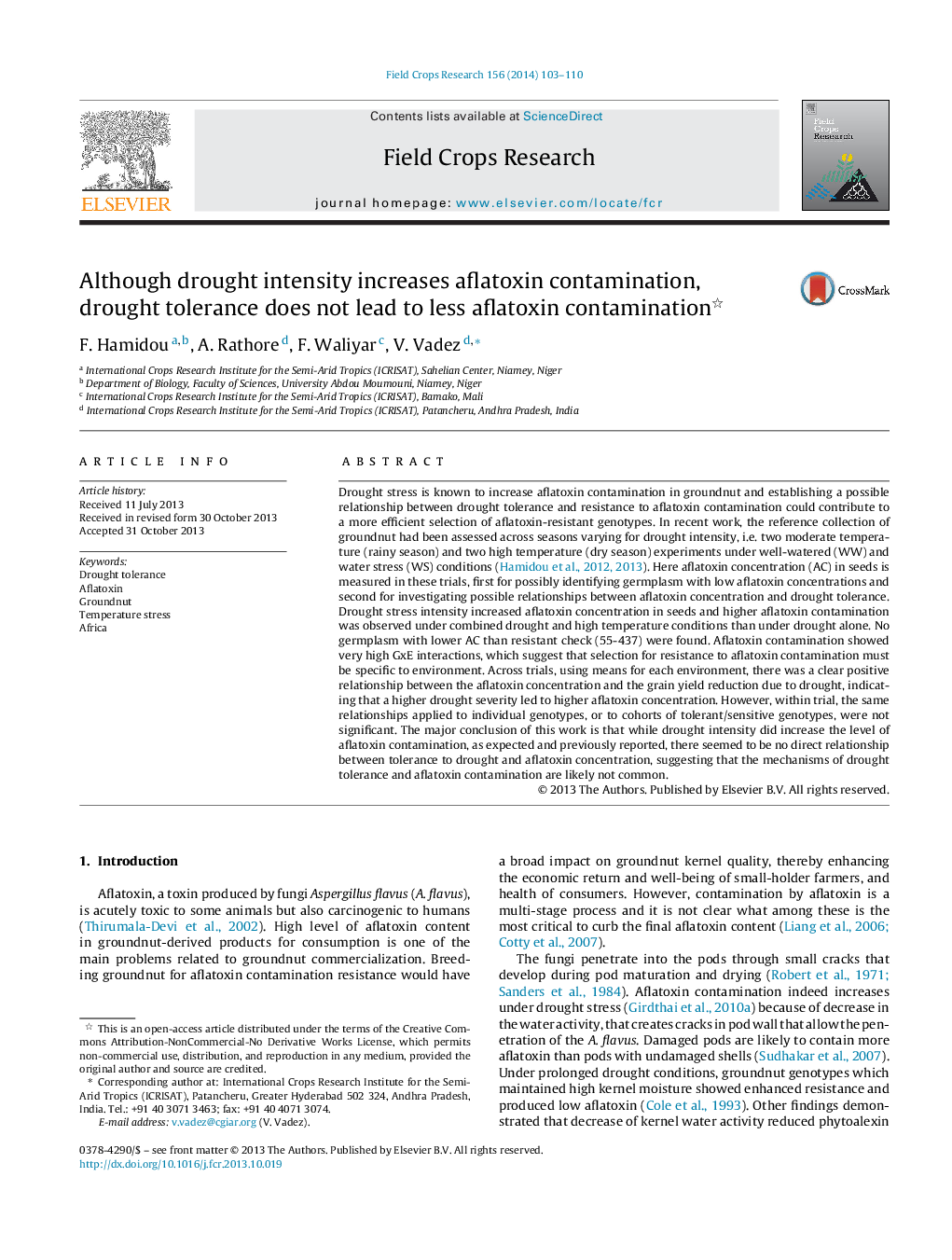| کد مقاله | کد نشریه | سال انتشار | مقاله انگلیسی | نسخه تمام متن |
|---|---|---|---|---|
| 6375113 | 1624707 | 2014 | 8 صفحه PDF | دانلود رایگان |
عنوان انگلیسی مقاله ISI
Although drought intensity increases aflatoxin contamination, drought tolerance does not lead to less aflatoxin contamination
ترجمه فارسی عنوان
اگرچه تنش خشکی آلودگی آفلاتوکسین را افزایش می دهد، تحمل به خشکی باعث کاهش آلودگی آفلاتوکسین ها نمی شود
دانلود مقاله + سفارش ترجمه
دانلود مقاله ISI انگلیسی
رایگان برای ایرانیان
کلمات کلیدی
تحمل خشکی، آفلاتوکسین، زمستانه، استرس دما، آفریقا،
موضوعات مرتبط
علوم زیستی و بیوفناوری
علوم کشاورزی و بیولوژیک
علوم زراعت و اصلاح نباتات
چکیده انگلیسی
Drought stress is known to increase aflatoxin contamination in groundnut and establishing a possible relationship between drought tolerance and resistance to aflatoxin contamination could contribute to a more efficient selection of aflatoxin-resistant genotypes. In recent work, the reference collection of groundnut had been assessed across seasons varying for drought intensity, i.e. two moderate temperature (rainy season) and two high temperature (dry season) experiments under well-watered (WW) and water stress (WS) conditions (Hamidou et al., 2012, 2013). Here aflatoxin concentration (AC) in seeds is measured in these trials, first for possibly identifying germplasm with low aflatoxin concentrations and second for investigating possible relationships between aflatoxin concentration and drought tolerance. Drought stress intensity increased aflatoxin concentration in seeds and higher aflatoxin contamination was observed under combined drought and high temperature conditions than under drought alone. No germplasm with lower AC than resistant check (55-437) were found. Aflatoxin contamination showed very high GxE interactions, which suggest that selection for resistance to aflatoxin contamination must be specific to environment. Across trials, using means for each environment, there was a clear positive relationship between the aflatoxin concentration and the grain yield reduction due to drought, indicating that a higher drought severity led to higher aflatoxin concentration. However, within trial, the same relationships applied to individual genotypes, or to cohorts of tolerant/sensitive genotypes, were not significant. The major conclusion of this work is that while drought intensity did increase the level of aflatoxin contamination, as expected and previously reported, there seemed to be no direct relationship between tolerance to drought and aflatoxin concentration, suggesting that the mechanisms of drought tolerance and aflatoxin contamination are likely not common.
ناشر
Database: Elsevier - ScienceDirect (ساینس دایرکت)
Journal: Field Crops Research - Volume 156, 1 February 2014, Pages 103-110
Journal: Field Crops Research - Volume 156, 1 February 2014, Pages 103-110
نویسندگان
F. Hamidou, A. Rathore, F. Waliyar, V. Vadez,
